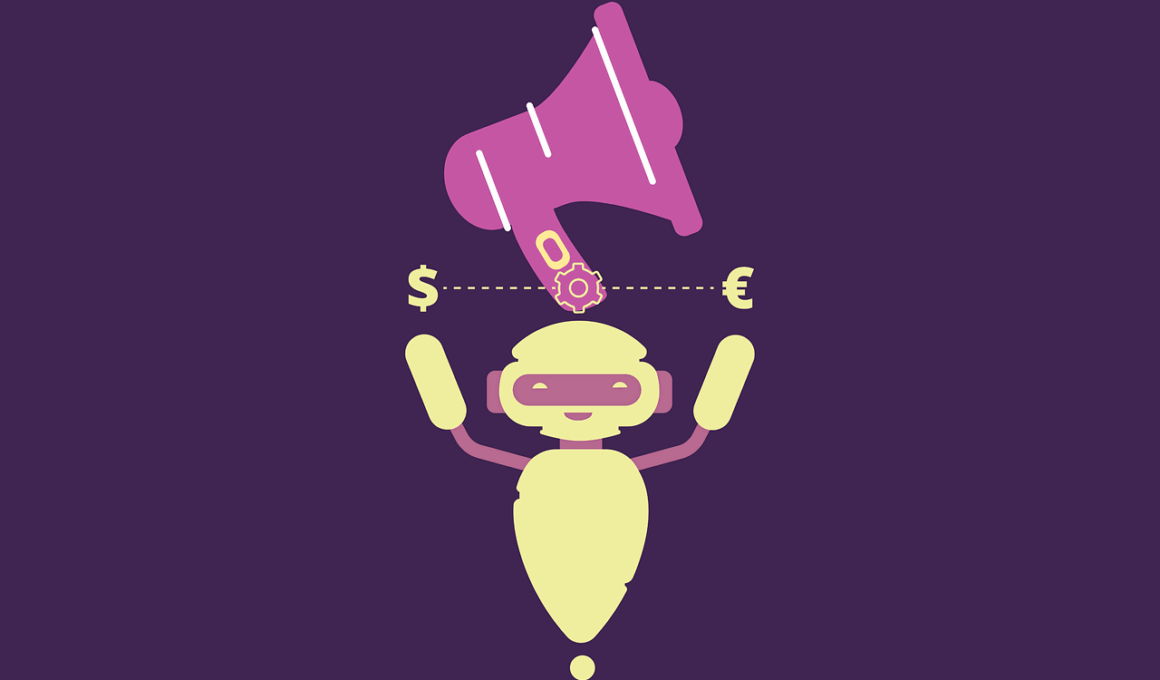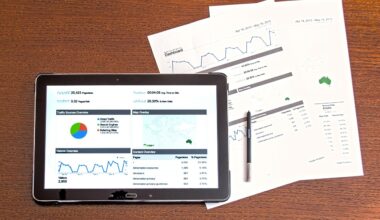Boosting In-Store Sales with Effective Retail Marketing Tools
In the competitive landscape of retail, leveraging effective marketing tools to boost in-store sales has become paramount. Retailers need to adopt a multifaceted approach to engage consumers effectively. One of the most impactful tools is in-store promotions, which entice customers through discounts and limited-time offers. These methods not only stimulate immediate purchases but also increase foot traffic. Retailers can further enhance visibility through engaging point-of-sale displays. Clearly highlighted products at checkout can lead to impulse buys, encouraging consumers to add items to their cart that they hadn’t initially planned on purchasing. Additionally, utilizing data analytics can provide insights into purchasing behavior, helping retailers optimize their inventory. Understanding customer patterns allows for more customized offerings, hence increasing loyalty and repeat business. Retailers can also utilize mobile marketing strategies that send promotions directly to consumers’ smartphones. Implementing loyalty programs can reward frequent shoppers, fostering stronger customer relationships. This holistic approach combines traditional marketing with technology, creating an environment ripe for increasing sales while enhancing customer experience. Effective retail marketing tools are indispensable in achieving maximum return on investment in retail settings.
Another powerful retail marketing tool is the adaptation of store layout and design. An inviting atmosphere encourages customers to explore more thoroughly. Successful retailers often employ strategic placement of high-demand products. This entices shoppers to roam through aisles, increasing the likelihood of additional purchases. The use of sensory marketing can also play a vital role. For example, scents and music tailored to the target audience can significantly affect shopping behavior. It establishes an emotional connection, leading to longer dwell times. Retailers should also consider the implementation of interactive displays, including touch screens that provide product information or virtual try-ons. This modern engagement captivates consumers’ attention. Clearly, customer-centric environments directly correlate to boosting sales. Social media marketing can be integrated into in-store experiences to bridge the gap between digital and physical shopping. Encouraging customers to share their experiences online can create buzz and attract new clientele. Furthermore, investing in employee training to enhance customer service is essential. Well-informed staff who provide excellent service can be crucial in converting potential sales. Strengthening the in-store experience creates an inviting atmosphere that enhances overall sales performance.
Personalization through Technology
In today’s digital age, technology allows for a high level of personalization in retail marketing strategies. Utilizing customer data enables retailers to tailor their marketing efforts, enhancing the overall shopping experience. By analyzing previous purchase histories, retailers can recommend products that align with individual preferences, making customers feel valued. Personalized emails, in-store recommendations, and targeted promotions create a customized experience that can significantly boost in-store sales. Furthermore, implementing augmented reality tools allows shoppers to visualize products in real-world settings. For example, customers can see how furniture looks in their homes before making a purchase. This innovative tool enhances the decision-making process, ultimately leading to higher sales conversion rates. Additionally, loyalty programs can employ personalized incentives based on shopping behavior. Custom promotions not only encourage repeat purchases but also instill a sense of loyalty among customers. Furthermore, mobile apps can enhance personalization by notifying customers of nearby promotions or events. Overall, integrating technology into retail marketing creates a cohesive approach that enhances user engagement, driving traffic and sales.
Moreover, using social proof as a retail marketing tool can foster trust and encourage purchasing decisions. Customer reviews, testimonials, and user-generated content can profoundly influence potential buyers. Highlighting positive experiences through social media can create buzz and drive foot traffic. In-store displays that feature real-time reviews or ratings also act as persuasive elements for shoppers contemplating a purchase. Additionally, incorporating unique experiences within the retail space can provide substantial advantages. Hosting events or workshops allows consumers to engage with the brand on a deeper level. These interactions foster community while promoting in-store sales. Effective communication of brand values resonates with customers and creates lasting impressions. Retailers can also utilize feedback loops to gather insights from customers directly. Surveys and interactive kiosks can streamline this process, allowing for adjustments in inventory and marketing strategies based on real-time data. Adaptability in retail operations is critical for enhancing the shopping experience and increasing sales. A commitment to understanding customer needs through transparent dialogue sets a foundation for growth. Overall, social proof, unique experiences, and feedback mechanisms create comprehensive strategies to improve in-store sales.
Utilizing Digital Tools
Additionally, embracing digital tools can revolutionize in-store marketing strategies. Utilizing tablets or interactive kiosks can facilitate real-time product information access. Customers appreciate having crucial data at their fingertips, allowing informed purchasing decisions. Mobile payment systems streamline checkout processes, enhancing customer satisfaction. Moreover, retailers should not overlook the impact of location-based marketing strategies. GPS technology enables retailers to send notifications about deals or events to customers within proximity. This targeted marketing approach can significantly boost foot traffic and sales. Implementation of QR codes throughout the store allows consumers to gather additional information effortlessly. Shoppers can use their smartphones to scan products and access further details, including price comparisons or product origin stories. This accessibility fosters confidence in their purchases, likely leading to a purchase decision. Furthermore, consider investing in personalized shopping assistants. These AI-driven solutions provide tailored experiences based on preferences and previous shopping habits. Offering personalized recommendations can enhance customer engagement and satisfaction. Retailers must embrace evolving technologies to remain competitive. Leveraging digital tools and technology-savvy strategies allows retailers to cater to the modern consumer’s evolving preferences effectively.
Moreover, fostering a strong community presence enhances retail marketing efforts significantly. Engaging with local events or charities can improve brand visibility while building customer loyalty. Retailers should actively participate in neighborhood initiatives that resonate with their target audience. This involvement creates emotional connections that result in long-term customer relationships. Social media platforms can be used to amplify local engagement efforts. Retailers can use these channels to promote store events, contests, or partnerships, creating a buzz within the community. This outreach encourages residents to visit the store physically. Additionally, collaborating with local influencers can create substantial marketing opportunities. Word-of-mouth recommendations from trusted figures can significantly impact purchasing decisions. Retailers should seek partnerships that align closely with their brand values and target demographics. Hosting community events or workshops can also provide an opportunity for customers to experience products first-hand. Creating memorable experiences fosters a sense of community while promoting products. Retailers should strive to maintain a consistent presence and actively engage in community conversations. Building lasting relationships through genuine interactions enhances in-store marketing success, translating to increased sales.
Summary of Effective Retail Marketing Tools
In summary, retailers must implement a variety of effective marketing tools to boost in-store sales and enhance customer experiences. Strategies begin with establishing engaging promotions and optimizing store design. Additionally, personalizing customer interactions through technology will lead to higher engagement levels. Employing sensory elements and innovative displays enhances the instore atmosphere, prompting further exploration of products. Leveraging customer data helps tailor experiences to individual preferences, ensuring customers see promotions aligned with their interests. Retailers should also focus on creating community connections through local engagement. This fosters loyalty while enhancing brand reputation within local markets. Implementing digital tools such as mobile payments and location-based notifications streamlines shopping experiences, increasing customer convenience. Moreover, engaging with social proof and unique experiences adds depth to marketing strategies. Overall, the strategic integration of these tools creates an enriched shopping environment. Retailers who capitalize on these marketing strategies will enjoy not only improved customer satisfaction but also increased sales. Developing a holistic approach that considers customer needs ensures ongoing success in an ever-evolving retail landscape.
Ultimately, achieving success in retail marketing requires constant adaptation and innovation. As consumer preferences and behaviors evolve, retailers must remain responsive to these changes. Continuously evaluating marketing strategies ensures alignment with consumer expectations while positioning the brand for growth. Utilizing effective retail marketing tools such as in-store promotions, technology adoption, and community engagement can lead to sustainable competitive advantages. Retailers must maintain an awareness of market trends to effectively anticipate consumer needs. Staying ahead of competitors will require the willingness to embrace change and explore new methodologies. Regularly seeking customer feedback aids in refining marketing efforts while enhancing product offerings. Brands that prioritize customer-centric strategies will foster loyalty, ensuring repeat business. Strong emotional connections cultivated through meaningful interactions create lasting impressions. Retailers should also consider investing in staff training to enhance customer service capabilities. Engaged employees who can provide knowledgeable assistance often become brand ambassadors. Creating a culture of excellence within retail environments creates a positive customer experience. By combining compelling marketing tools with an exceptional shopping atmosphere, retailers empower customers to make informed purchasing decisions. This strategic focus ultimately leads to enhanced in-store sales and overall retail success.





